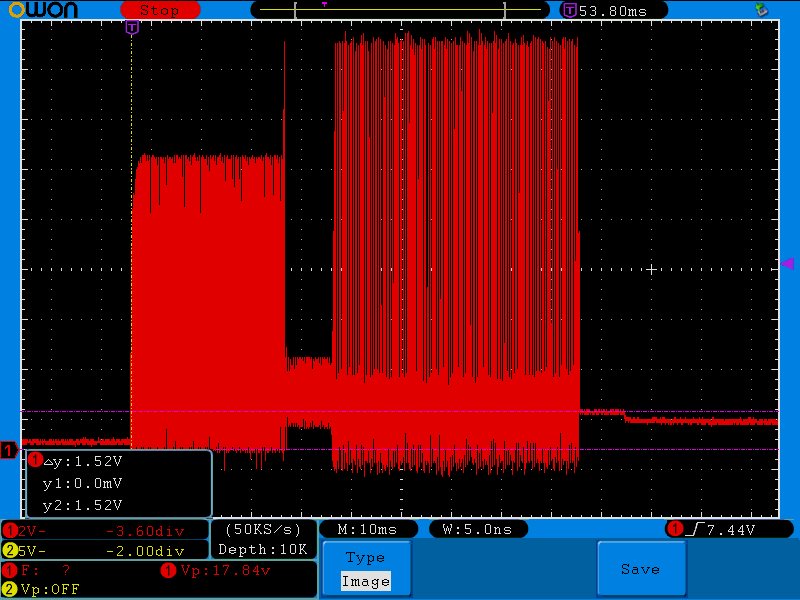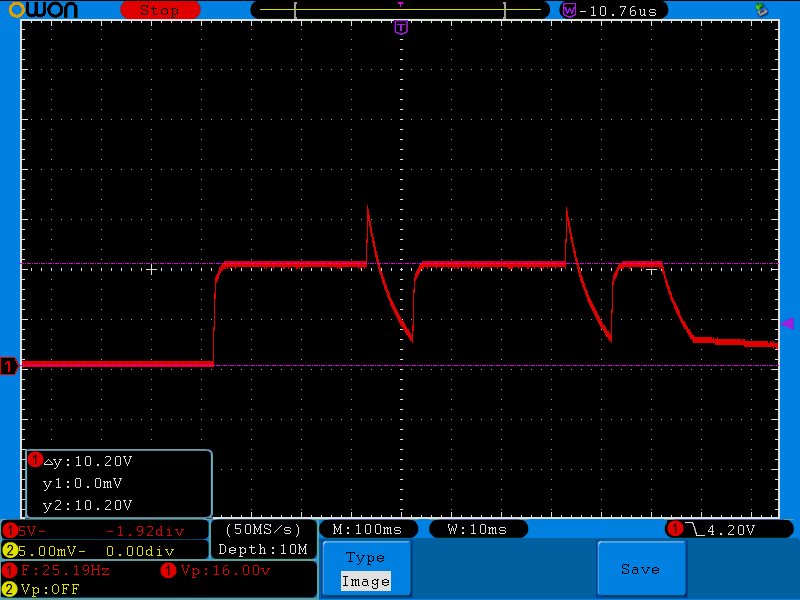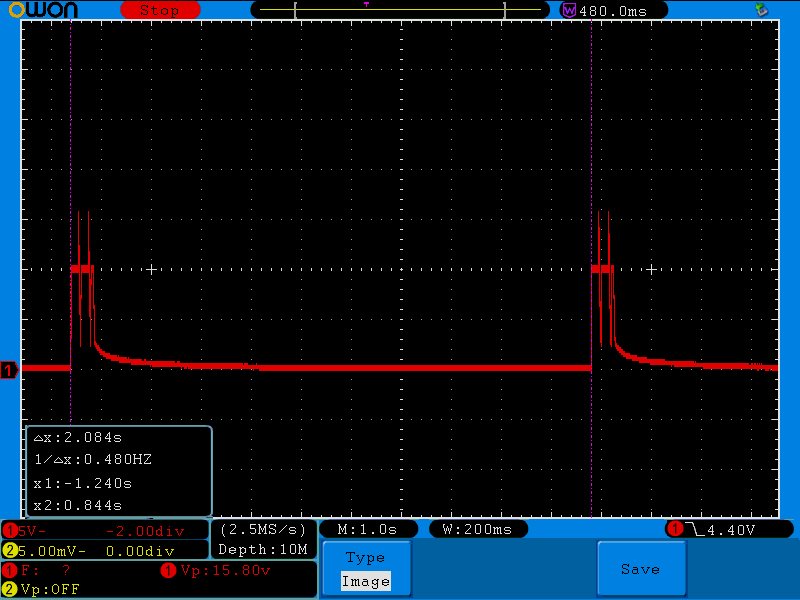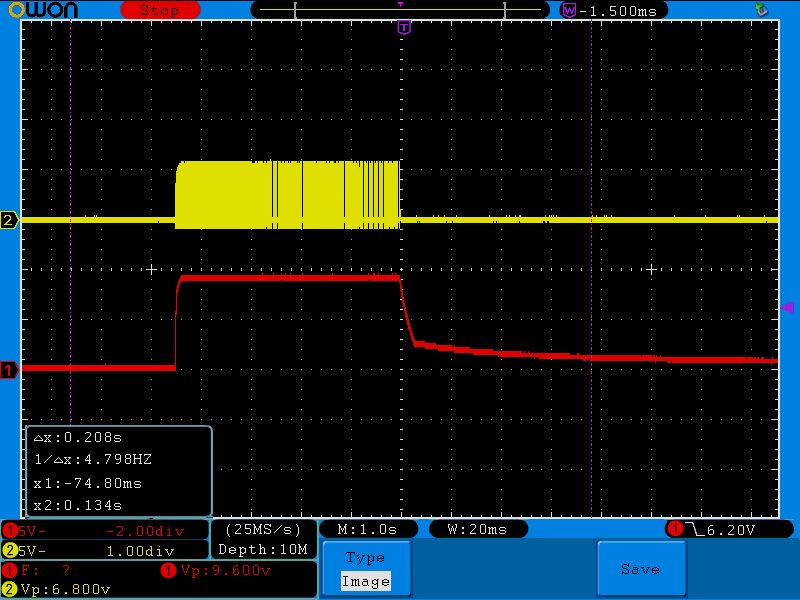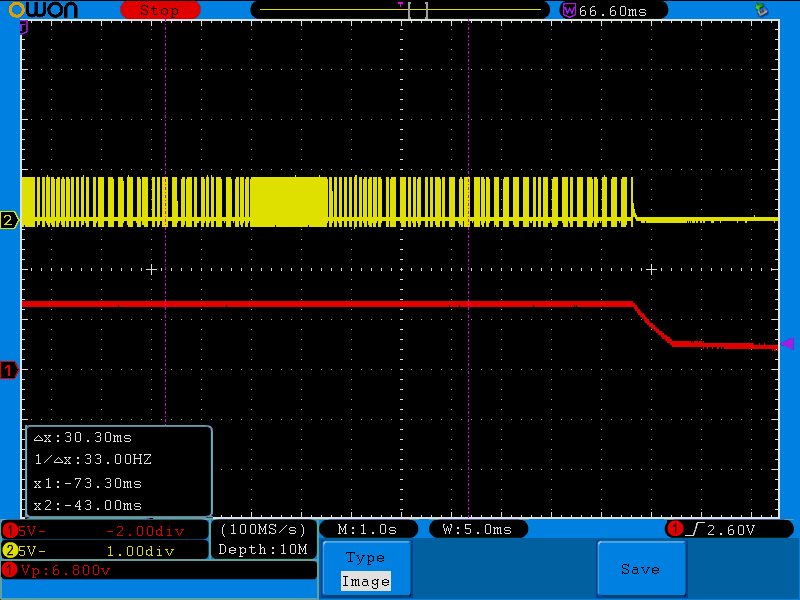Hi all,
I'm doing maintenance on a 'older' project. The Rx coil has delivery difficulties. Therefor we are looking for an alternative. Base on physical limitations we have I selected a new one and calculated the capacities that should accompany it. However, once stuffed to the board the Qi received it no longer receiving power while it was with the previous coil and capacitors.
Due to the COVID-19 crisis I'm unable to use a lot of the equipment in the lab, therefor I'm using my very basic scope at home. When I measure on the Rect pin, I see the following result. My conclusion is that I receive the packages from the Tx, but it is enable to start the energy transfer. I experimented with changing the capacities a bit. But still no improvement. Does somebody have some suggestions?
Below my schematic, please note that the values of the capacitance's have been changed. For the new coil!
C101 = 47nF 50V +-10% SMD0603 X7R
C102 = 15nF 50V +-5% SMD0603 X7R
C103 = / (open)
=> 62nF
C104 = 1nF 50V +-10% SMD CERAMIC X7R
C105 = / (open)
C106 = / (open)
'Old' working Qi Rx coil: Abracon AWCCA-38R32H09-C01-B 11,1µH 260mOhm
'New' not working Qi Rx coil: Wurth Electronic 760308101214 26µH 420mOhm


